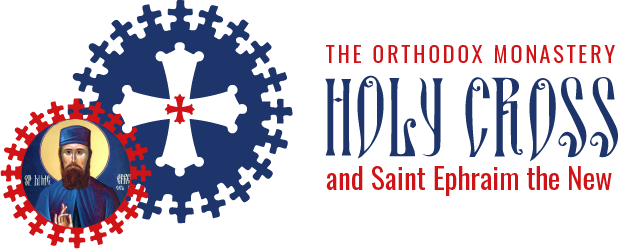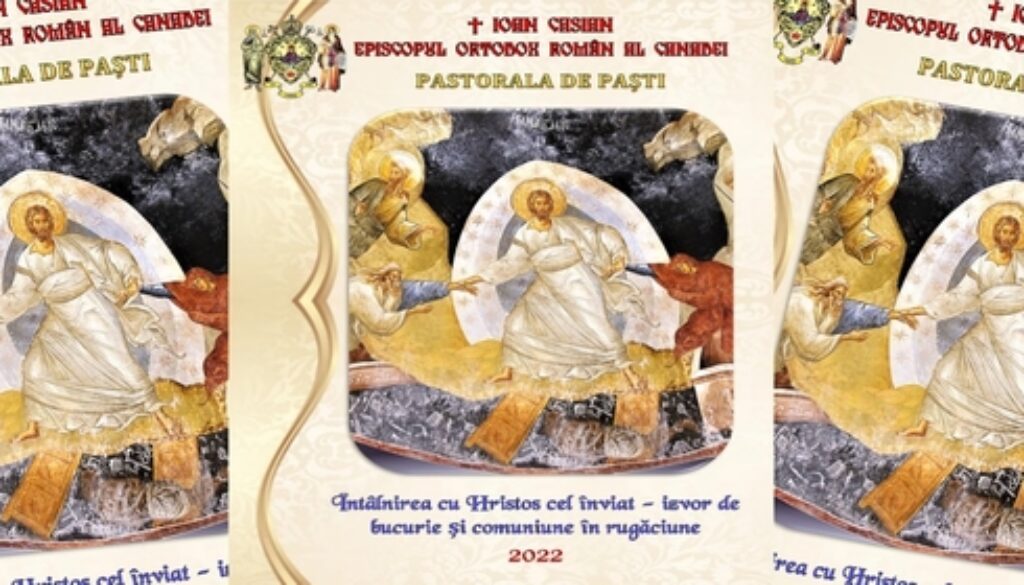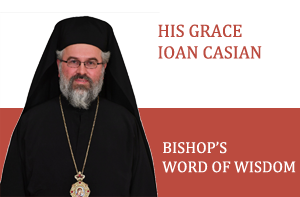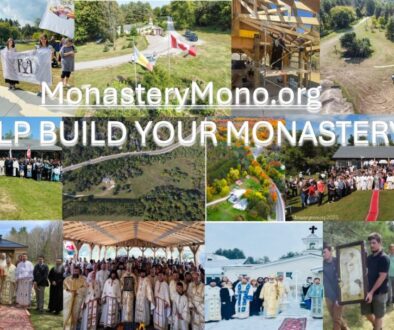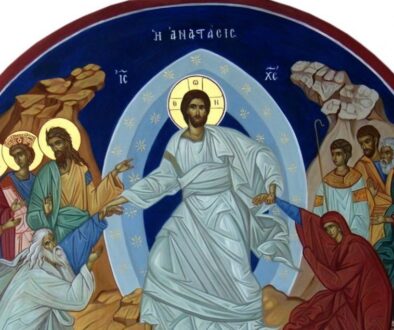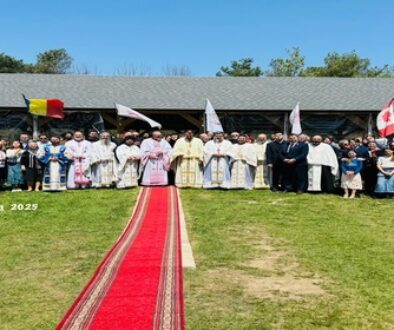† IOAN CASIAN: PASTORAL LETTER AT THE FEAST OF THE LORD’S RESURRECTION, 2022
holycrossorthodoxmonastery Uncategorized
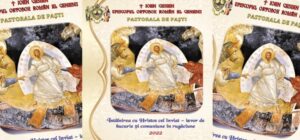
PASTORAL LETTER
AT THE FEAST OF THE LORD’S RESURRECTION, 2022
† IOAN CASIAN
By the mercy of God
Bishop of the Romanian Orthodox Diocese of Canada,
to our Beloved clergy and Orthodox Christians,
peace and joy from Christ, the Risen Lord,
and from us, hierarchical blessing!
“These all continued with one accord in prayer and supplication,
with the women and Mary the mother of Jesus,
and with His brothers.” (Acts 1, 14)
Most Reverend Fathers,
Beloved brothers and sisters,
Christ is risen!
The encounter with the risen Christ is a source of communion in prayer with God and the neighbor. The Book of Acts tells us about the last encounter of the resurrected Savior Jesus Christ with His disciples before ascension to heaven[1] and what followed: “Then they returned to Jerusalem from the mount called Olivet, which is near Jerusalem, a Sabbath day’s journey. And when they had entered, they went up into the upper room where they were staying: Peter, James, John, and Andrew; Philip and Thomas; Bartholomew and Matthew; James the son of Alphaeus and Simon the Zealot; and Judas the son of James. These all continued with one accord in prayer and supplication, with the women and Mary the mother of Jesus, and with His brothers” (Acts 1: 12-14). The encounter with the risen Christ constitutes the Church. Following the encounter with Him, the Holy Apostles return to Jerusalem and together with the Mother of God, the other women and disciples, form the first Church or community that gathers and prays in His name. From the first moments of the establishment of the Church we see that prayer and communion are the essential elements of the Christian community. The disciples do nothing but follow the path taught and practiced by Christ.[2]
Gathering in one mind and persevering in prayer is the fulfillment of Christ’s invitation addressed to the disciples at the Last Supper[3] to do all things in His name. This founds the Church. Prayer and communion are the distinct signs and fundamental pillars of the living Church. Christ the Lord first chooses His disciples[4] and introduces them into the communion and the life of the incarnate God visibly manifested by the mighty word, miracles, resurrections, and all the works of the Savior Christ.
After His third day resurrection, Christ makes the disciples partakers of the mystery of His resurrection as a premise, foretaste, and reality of the world to come already present here and now: “And as they[5] went to tell His disciples, behold, Jesus met them, saying, “Rejoice!” So, they came and held Him by the feet and worshiped Him” (Matthew 28: 9). “Then the eleven disciples went away into Galilee, to the mountain which Jesus had appointed for them. When they saw Him, they worshiped Him; but some doubted” (Matthew 28: 16-17). “Now it came to pass, as He sat at the table with them[6], that He took bread, blessed, and broke it, and gave it to them. Then their eyes were opened, and they knew Him; and He vanished from their sight (…)” (Luke 24: 30-31). The resurrection of Christ is the central and founding event of the Church. From its renewing and restorative power, the saving grace flows over the Church and the world. In His own person, Christ performs our redemption and our restauration.
But man, the humanity, after the fall from paradise, was wounded by sin and death and needed healing. How could this be done? “Well, what is this remedy (against sin, corruption, and death – A/N)? – St. Gregory of Nyssa wonders. Nothing but that body which showed itself above death and became the beginning of our life. For, as the Apostle says, ‘a little leaven leavens the whole lump’ (1 Corinthians 5: 6) in the same way that the body of God entered our whole body, transforming and changing it. (..) we must examine how it is possible for that body, which is constantly divided among so many believers from all over the earth, to remain whole in every particle of it even though it is given to each one in its entirety.”[7] What heals us from death and corruption is the life-giving, immortal, and incorruptible body of Christ. Only He acquired this capacity. In paradise man’s immortality depended on the remaining in communion with God. After the coming of Christ, eternal life and righteousness depend on the same remaining in fellowship with God through Christ. Man could not heal himself from corruption and death without receiving the Body of the Immortal, that is, Christ present in the Holy Eucharist. Death was first defeated in the Body of Christ, and immortality and incorruption were atained in it too. Only by participating in the communion with Christ present in the Holy Eucharist man can attain eternal life. Christ renews, restores, and redeems our lives through the resurrection. The Holy Eucharist is the Body and Blood of Christ, that is, the new humanity. It is the gift of God that man receives in the Divine Liturgy.
St. Gregory of Nyssa says that Christ through the Holy Eucharist gives Himself entirely to every believer. At the same time, He becomes the beginning and the foundation of the new life in each person, and at the same time base of the communion between them because it is present whole in each one. The life of every Christian and the communion between them receive a new foundation carrying the immortality. “You have become related to us through the flesh, we have been made your relatives by the divinity. / For by taking flesh you have given us the divine Spirit,”[8] says St. Simeon the New Theologian. (…) We become the members of Christ, / and Christ our members. / And the hand of Christ and the feet of Christ are mine.”[9] Our ecclesial body becomes the body of Christ. He is the head of the Church, and we are its members. Through the veins of the ecclesial body flows the blood of the new life of Christ. The Holy Eucharist becomes the medicine that heals us from sin and death. It strengthens the communion between believers and opens our lives to eternity.
In Christ together we become the temple, the church, or the house of God: “(…) and You make every one of us home and dwell in us all / and You make Yourself home for all of us, and we live in You, / each of us, Savior, whole with You whole / and You are with each one of us, alone with him alone / and in the same one are all alone above us”[10]– says St. Simeon the New Theologian. In Christ, that is, in the Church, prayer and communion remain the main elements which shape the new humanity. At their core is the presence of God as a whole in each one individually and in all together. In the temple of God, which is the Church, we live the resurrection of Christ in a personal and communal way.
The purpose of our life here is to restore fellowship with God through the Holy Eucharist: “You have heard how the communion of the divine and most pure Mysteries is eternal life, and that those who have eternal life are the ones whom the Lord says will rise in the last day”[11] – declares St. Symeon the New Theologian. The Eucharist represents the eternal life lived in advance in the Church. Through Christ present in it we have the premises for the resurrection of all us at end of the world.
Beloved brothers and sisters in the Lord,
The year 2022 was proclaimed by the Romanian Patriarchate the Homage Year of prayer in the life of the Church and of the Christian and the Commemorative Year of the Hesychast Saints Symeon the New Theologian, Gregory Palamas and Paisios from Neamț. It is a year in which our attention must be directed to the enhancement of the prayer. It means to speak or to dialogue with God communally and in person. The two kinds of prayer – personal and communal – are complementary. They support and strengthen each other. First, praying together makes us persist ‘in one mind’. This strengthens the unity of the Church as community according to the model of the first disciples. Second, personal prayer shows us the irreducible quality and the invaluable price of the human person. It is a fine balance that the Church has tried to maintain over time between the community and the individual. However, there have been many ideologies of yesterday and today that have tilted to one side or the other of this way of being natural, natural, balanced and authentic that the Church proposes.
During the two years of the pandemic, we experienced moments of weakening of our ecclesial communion due to sanitary restrictions. Recently, the whole world, especially the Orthodox one, has been shaken by the armed conflict between Russia and Ukraine. This and other similar things not long ago spent are events that must remind us all the reality of violence and death present in our society. They should further convince us of the need for dialogue, communication, and communion between us as a means of resolving these issues. It should also make us better understand the deep void left by the loss of human life, the suffering caused by incalculable material damage and other consequences that are always impossible to foresee. Conflict should not justify the need to create more means to continue this cycle of violence and death, as it is the case today and was in the past. Otherwise, we will be participants in the same show that is repeated every time with other actors, in a different cultural and material context, but with the same scenario that brings suffering and death. The rationale of the existence and the seduction of these conflicts is often disguised in ‘legal grounds or humanitarian causes.’ However, on closer inspection in the light of the Holy Scriptures, the words, life, and deeds of Christ, all of these prove to be poor, misleading, damaging, and deeply distressing.
The year of prayer urges us to renew our way of being in God and in our relationships with our neighbor. It is an opportunity to lay down the new foundation of our daily Christian ethos in personal and community life, as church. Christ and His saving work is the beginning, the end, and the fulfillment of all things. He is the One who restores and makes us all new: “And He will make all the ugly beautiful, / adorning them with the beauty and glory of the divinity,” – says St. Symeon the New Theologian. And we will all become gods together through God, / not seeing the ugliness of our flesh, / but making ourselves wholly like the body of Christ. And every member of us will be the whole of Christ.”[12] Communion with God and the new life give us back the beauty and glory with which we were endowed by God in paradise. What is Christ by nature we will become by grace, that is, the sons and daughters of God.
On the Feast of the Resurrection of the Lord, let us draw near and share in Christ the Lord; let us glorify Him, rejoicing in the gift of life and salvation given to us in the Church! May the joy of the resurrection of Christ spread in everyone’s life for its renewal and for the eternal life!
“The grace of our Lord Jesus Christ, the love of God the Father, and the fellowship of the Holy Spirit be with you all.”[13]
CHRIST IS RISEN!
Your brother praying to Christ the Lord,
† IOAN CASIAN
Saint-Hubert / Montreal 2022
[1] Acts 1, 1-11
[2] Matthew 14, 13-23; Marc 6, 34-46; Luke 9, 11-20; John 6, 2-15
[3] “And He took bread, gave thanks and broke it, and gave it to them, saying, ‘This is My body which is given for you; do this in remembrance of Me.’ Likewise He also took the cup after supper, saying, ‘This cup is the new covenant in My blood, which is shed for you.’” (Luke 22: 19-20).
[4] Matthew 4, 18-22; Marc 1, 16-20; Luke 5, 2-11; 6, 13-16
[5] Myrrh-bearing women
[6] Luke and Cleophas
[7] St. Gregory of Nyssa. About the Soul and the Resurrection. (translation, notes and comments by Fr. Grigore Teodorescu) Herald Publishing House: Bucharest 2003, pp. 192-193
[8] Hymn 15, p 380-381
[9] Hymn 15, p 381
[10] Hymn 15, p 380-381
[11] St. Symeon the New Theologian. Theological and ethical discourses. Writings I. (introductory study and translation by deacon Ioan I. Ică jr.) Deisis Publishing House: Sibiu 1998, p 211
[12] Hymn 15, p 384
[13] Divine Liturgy of St. John Chrysostom
